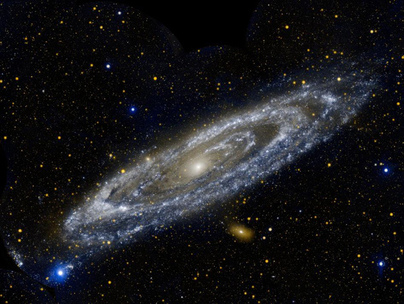My Physics 1040 class was a blast and I enjoyed most every minute of it, except maybe the tests. The study habits I learned and picked up on during the coarse of this class will continue to help me in my future learning at SLCC. One thing I found that helped was writting down notes before a test, even if I don't get to use them they still help me learn the information and facts that I need to know. Another thing that helped me was reading the chapter or subjects before class, it keeps me caught up and I feel like I know more. These, as well as others, will carry with me and help in my further education at SLCC.

I have been assigned another blog for my physics 1040 class. As I was listening to my professor talk about the three diffrent types of galaxies there are. I was really interested in them, and for that reason, i plan on telling you about the three types with the help of my book, my brain, and astronomynotes.com
The first question you might ask is, what are galaxies? Galaxies are collections of billons of stars; our home galaxy, the Milky Way, is a good example. Stars, gas, and interstellar dust orbit the center of the galaxy due to the gravitational attraction of all the other stars. New generations of stars are born out of gas that condenses within regions called giant molecular clouds, and the stars sometimes form into star clusters. When a star reaches the end of its evolution, it may return much of its gas back to the interstellar medium, which will be the source for a new generation of stars. Galaxies can be thought of as systems that turn gas into stars and back again.
There are three types of galaxies. Spiral, Elliptical, and Irregular. Spiral galaxies have three main components: a bulge, disk, and halo and are shaped like a disk. The bulge is a spherical structure found in the center of the galaxy. This mostly contains older stars. The disk is made up of dust, gas, and younger stars. The disk forms arm structures, they originate directly from the nucleus, or bulge. Spiral arms probably form as the result of waves that sweep through the galactic disk. Like the waves on the ocean, these so-called "density waves" don't carry any material with them - they move by disrupting the material they pass through. In the case of galaxies, density waves squeeze clouds of interstellar gas, causing new stars to form inside the clouds. Some newborn stars are
massive, hot, and bright, so they make the spiral arms appear bright. These massive stars are blue or white, so the spiral arms look blue-white, too. The halo of a galaxy is a loose, spherical structure located around the bulge and some of the disk. The halo contains old clusters of stars, known as globular clusters. Spiral galaxies appear blue in color and have continued star population.
Elliptical galaxies are shaped like a football, or an elongated sphere.Stars in ellipticals do not spread out into a thin disk, as they do in spiral galaxies; instead, they wrap evenly around the galaxy's center in all
directions Their light is smooth, with the surface brightness decreasing as you go farther out from the center. Elliptical galaxies are given a classification that corresponds to their elongation from a perfect circle, otherwise known as their ellipticity. The larger the number, the more elliptical the galaxy is. Elliptical galaxies appear red in color and have no more star population. The galaxies' red color comes from older, cooler stars that are in it. The fact that most of the light comes from old stars suggests that most ellipticals formed long ago. The largest galaxies in the universe are giant elliptical galaxies. They can contain a trillion stars or more, and span as much as two million light-years - about 20 times the width of the Milky Way.
The third and final type of galaxy is a Irregular galaxy. In Irregular galaxies their stars, gas, and dust are spread randomly meaning they have no regular or symmetrical structure. Irregulars are the smallest galaxies, and they may contain as few as one million stars.